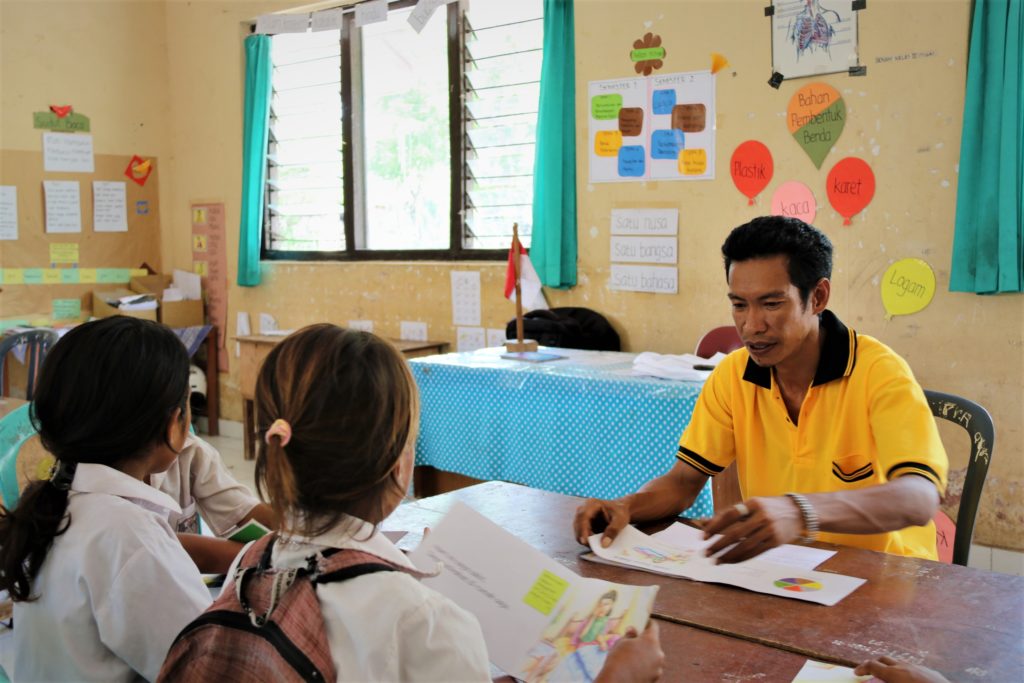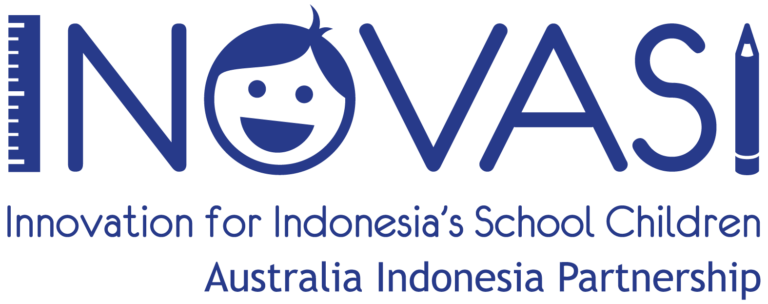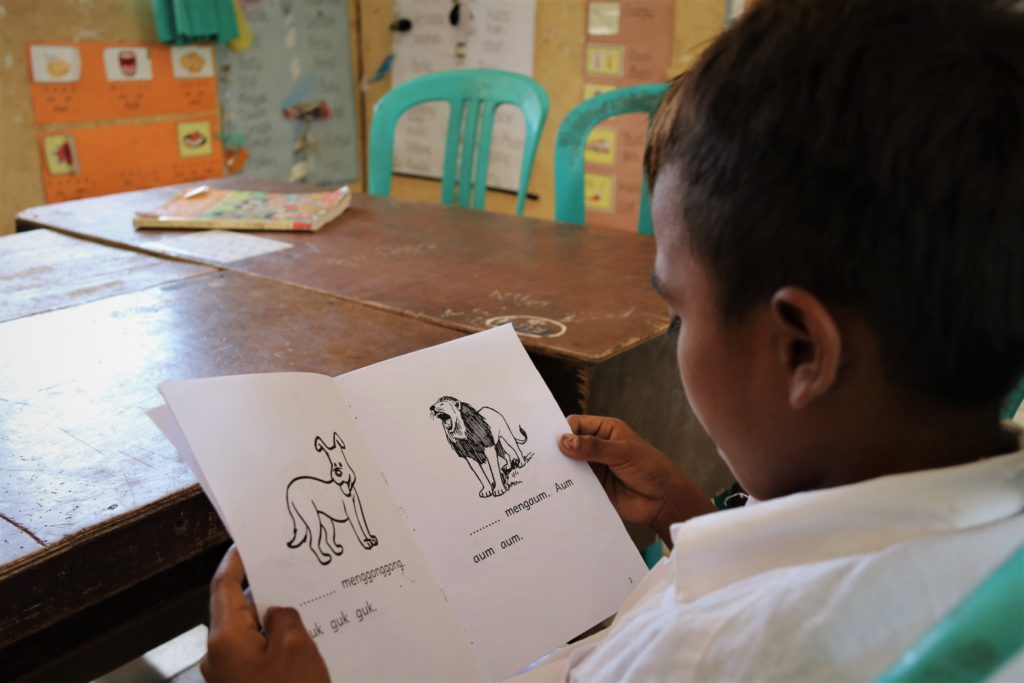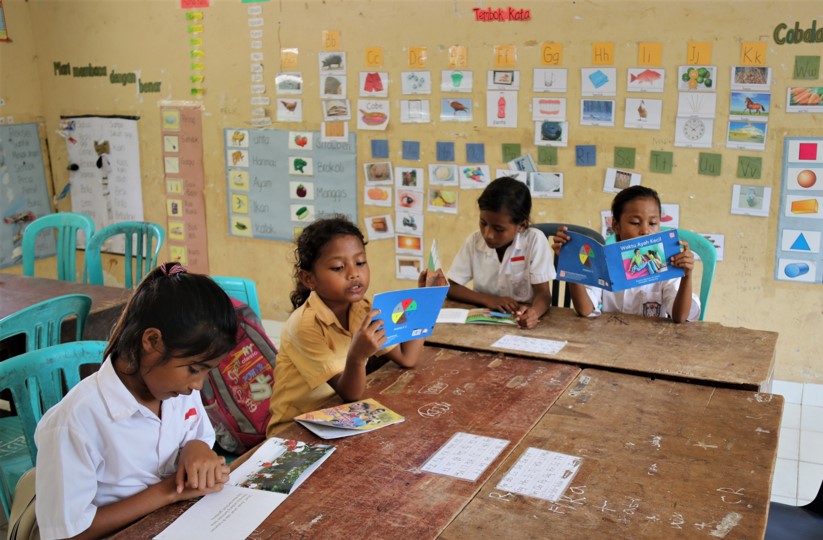
Two days later, Yulius would test these students’ abilities. He found that they were able to read the given sentences fluently; however, feeling unsure of his students’ abilities, Yulius asked them to read their sentences one more time. This time, they read word for word while he watched them. Yulius discovered that, in fact, most of the students were not yet fluent. He once again gave them the same assignment.
Yulius recounted, “I gave them the same assignment and tested them two days later, but this time I had them exchange their papers with a friend.” He then exchanged the sentences among the students so that none of them would read the sentences they had brought home. Again, it turned out that many of the students could not read fluently.
These findings reinforced the results of the previous test Yulius had given his students. Yulius realized that his new students had actually memorized the given sentences.
Yulius admitted that even though he already knew about his students’ reading skills, he could not do much about it. His teaching method was still monotonous and traditional throughout each lesson, and he did not pay attention to the students’ different levels of abilities.
“The students whose abilities were already good, they could follow (the lessons). Meanwhile, those with average abilities or below average abilities could not follow the lessons and eventually became lazy.” Yulius acknowledged that he only followed what was written in the textbook.
“In the curriculum, there are no detailed steps on how to teach children with different abilities, so I just followed what was written,” he said.
The assignments and tests in the textbook are the same for all students, regardless of their abilities, so the students whose abilities were lacking fell even further behind. As a result, the students became disinterested and often looked for ways to avoid interacting with the teacher.
“The students were afraid to be asked questions. They would lower their heads or even asked for permission to leave the classroom,” added Yulius.
Thankfully, things have changed. Unlike in the past, Yulius now groups his students according to what he learned in the training he received from INOVASI.
When Yulius grouped his students according to the results of a formative test, from the test results, he found that his students were divided into four groups: reading syllables, reading words, reading fluently, and reading comprehension. Each group is assigned to appropriate guided reading activities.
Yulius explained, “Guided reading is basically reading together with several students with the same reading ability. This way, the teacher can find out more about each student’s specific abilities, probing deeper into revealing the difficulties each student experiences while reading.”
The following are the steps Yulius follows when conducting a guided reading activity.
To start, the teacher distributes tiered story books to all of the students by paying attention to each group’s abilities. The higher a student’s reading ability is, the higher the level of the books given. Lower level books have shorter sentences than higher level books.
Next, the teacher reads the story while the students in the group quietly follow along. After that, the students read out loud one by one. The number of pages that are read is arranged so that after all the students have had an opportunity to read out loud, the book is completed. When the students are reading, the teacher asks questions to test the students’ reading comprehension.
Then, the teacher randomly selects a student to retell in their own words what was just read. Finally, the teacher asks the students if they found it difficult to read the story; for example, did they find it difficult to pronounce any words. This information is used as material by the teacher to provide additional practice for students who are struggling before the teacher moves on to the next group.
According to Yulius, this activity usually lasts around 35 minutes per group. When a group is reading together with Yulius, the other groups are working on the assignment he has given at the beginning of the lesson. “For example, when I’m reading a story from the Big Book, I ask the students to draw one of the characters in the story,” said Yulius. The guided reading activities are conducted every Saturday.
Guided reading activities and various learning strategies that Yulius has conducted have successfully improved the students’ learning, and the students are attending school more often. Previously, out of his 20 students, almost half of them were often absent. However, that number has now decreased. “Now there are usually no more than two students absent on the same day,” said Yulius
An improvement in students’ interest in learning is evident from their new habit of reading tiered books during recess and playing with various learning aids during class. Their reading abilities have also improved. To track this, every week, Yulius noted the progress of his students’ reading skills using an instrument called a Running Record. Yulius used different tiered books to test his students’ reading skills, and each week, the students made fewer reading errors.
For Yulius, the guided reading activity has helped him to understand more about the learning needs of his students, therefore enabling him to provide appropriate learning strategies.
“Previously, I felt that I was unable to create interesting learning strategies for the students. However, by knowing where the students’ weaknesses lie, I can now develop appropriate learning strategies and media to meet their needs,” he concluded.









